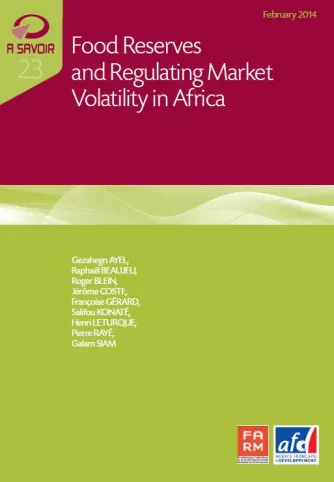Share the page
Food Reserves and Regulating Market Volatility in Africa
Published on

The aim of this study is to examine public food storage systems in developing countries, particularly Africa. In which context is it pertinent to set up one type of stock over another? What conditions have to be met to ensure the institutional and economic feasibility of this type of instrument? How can undesirable effects be avoided?
To answer these questions, this report is based on the current status of theoretical debate, a review of the evolution of public storage systems and the teachings from three national case studies (Ethiopia, Burkina Faso and Egypt). The analysis emphasizes the real and theoretical role of stocks in the management of different types of risk with which households are confronted. Buffer stocks, in principle, make it possible to act on product price and in so doing stabilize the revenue of producers and consumers. However, their efficacy depends strongly on the technical, financial and institutional resources of public authorities. Emergency stocks, which are part of the range of social security nets, are theoretically capable of supporting vulnerable households in the face of all types of shocks, but their efficacy is also very much linked to available resources.
This publication comes at a time when the question of public stocks is also high on the agenda of the ninth ministerial conference of the WTO (December 2013. Bali).
Useful Information
-
Authors
-
Françoise GÉRARD, Galam SIAM, Gezahegn AYEL, Henri LETURQUE, Jérôme COSTE, Pierre RAYÉ, Raphaël BEAUJEU, Roger BLEIN, Salifou KONATÉ
-
Edition
-
23
-
Number of pages
-
210
-
ISSN
-
2105-5386
-
Collection
-
To Know
-
Other languages
